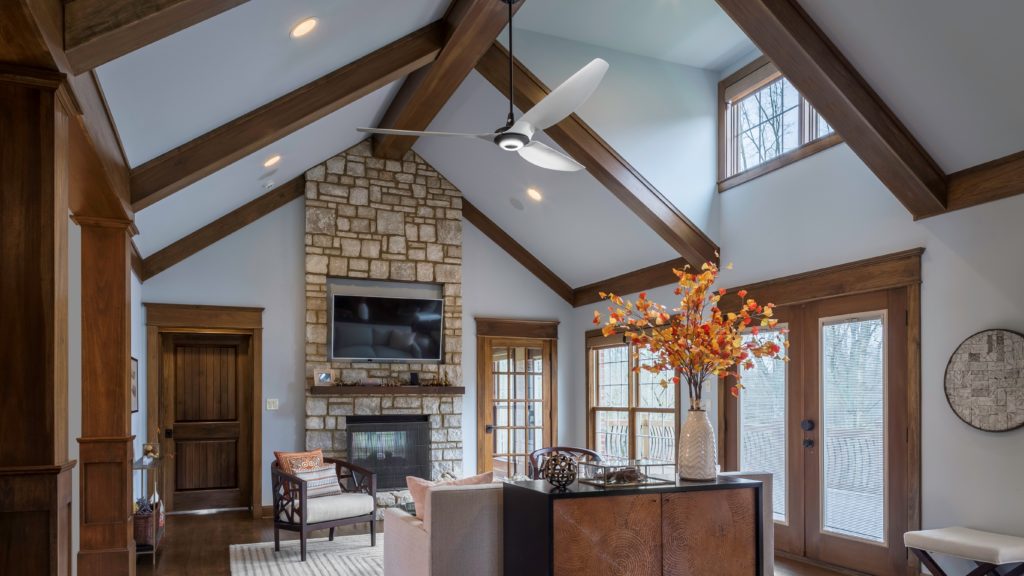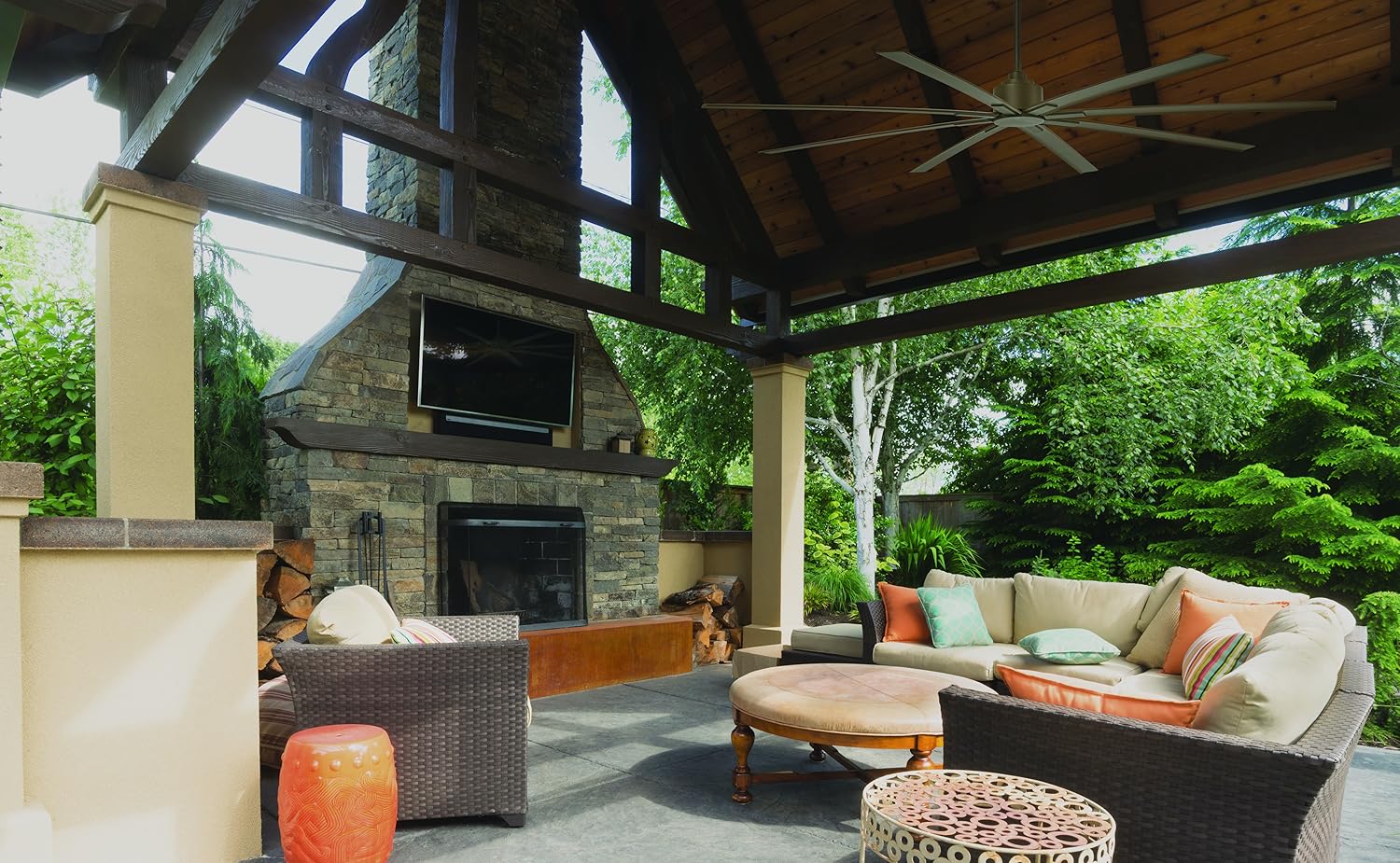Introduction
Ensuring that your house is warm and pleasant becomes first concern when the winter chill arrives. Using your ceiling fan properly is one of the simplest and most energy-efficient ways you may improve warmth in your house. Although visually appealing, Fan Direction for Heating in Vaulted Ceilings can make maintaining constant room temperature difficult. Still, don’t panic; changing the direction of your ceiling fan will help to improve heating efficiency and circulate warm air.
This article will walk you through how to change the fan direction in vaulted ceilings to enhance warmth throughout the winter, so saving you money on your energy bills and maintaining the comfortable living environment.
Why Ceiling Fans Matter in Winter
Usually connected with summer cooling, ceiling fans can also be quite helpful in winter. Warm air rises naturally; with vaulted ceilings, the hot air often gathers close to the ceiling while the lower sections of the room stay chilly. Strategic use of your ceiling fan will help you to lower this warm air to where it is required, therefore improving the comfort of the surroundings.
Setting your fan such that it moves the warm air about without generating drafts or discomfort is the aim in winter. This method can lower the burden on your heating system and help you keep a constant temperature across the room.

Step 1: Set Your Ceiling Fan to Rotate Clockwise
When heating rooms with vaulted ceilings in the winter, clockwise fan motion is the most efficient. Here are the reasons:
When your ceiling fan runs clockwise, it drives the warm air that has ascended to the ceiling back down toward the living area. This spreads the heated air, therefore avoiding heat collecting at the ceiling.
This helps to eradicate cold areas and thus improve the general comfort of the room by producing a more even distribution of warmth throughout.
Most ceiling fans have a little switch on the motor that lets you adjust the blade direction. It’s just a basic flip between clockwise and counterclockwise.e. Be sure to turn your fan off before adjusting this setting to avoid any accidents.
Step 2: Use a Low Speed Setting
You want to keep the fan speed on the lowest setting after turning it to run clockwise. The intention is not to draft but rather to softly transfer the warm air downhill. Running the fan at a low speed will gently move the air, therefore ensuring that warmth is dispersed without generating any unpleasant wind chill.
- A low speed guarantees that warm air is progressively pushed down, therefore maintaining a constant temperature across the room without too much disturbance of the air.
- By using a low speed, one can also aid to lower fan noise, therefore lessening the apparent operation of the fan. Still effective.

Step 3: Adjust for Room Size and Ceiling Height
The height and size of the room will affect the amount of warm air you need to re-distribute when you have vaulted ceilings. Maintaining warmth at ground level is more difficult when vaulted ceilings produce a greater area for heat to rise. This is how you adapt:
- For High Vaulted Ceilings: If your ceilings are exceptionally high, you may need to experiment with the fan speed. In larger rooms, even a clockwise spinning fan at a low speed can help distribute warm air more efficiently.
- For Standard Vaulted Ceilings: For rooms with more moderate vaulted ceilings (typically between 10-15 feet), the clockwise rotation at low speed should be enough to move air effectively.
Using several ceiling fans will help to more efficiently move air in very big rooms or locations with especially steep vaulted ceilings.
Step 4: Consider the Placement of Your Fan
Furthermore affecting the efficiency of your ceiling fan in the room is its location within it. To provide balanced airflow, the fan should ideally be positioned midway across the room.
- Near the Center of the Room: If your fan is near the center of the room, it will have the best chance of moving warm air evenly throughout the entire space.
- Fans in Corners: If your fan is closer to a corner, you may need to adjust the fan speed or direction slightly to ensure the air is circulating properly.
Make sure every ceiling fan in a room with several ceiling fans is turned to run air in a clockwise motion. For assisting to spread warm air along the room’s borders, fans positioned closer to the walls can be especially successful.
Step 5: Use Fans in Conjunction with Your Heating System
While ceiling fans can help distribute warm air, they are not a replacement for your heating system. They work best in conjunction with your home’s existing heat source, such as a furnace or space heaters. Here’s how to combine both effectively:
- Reduce Heat Loss: By circulating the warm air downwards, ceiling fans help reduce the need for extra heating, allowing your furnace or space heaters to work more efficiently.
- Zoning: If you have multiple rooms with vaulted ceilings, consider using ceiling fans in each room to help redistribute the heat to areas that tend to be colder.
This combination can help you maintain a comfortable temperature while reducing overall heating costs.

FAQ
Can one use ceiling fans during winter? Indeed, in the cold they can be really helpful. Setting them to spin clockwise on low speed helps warm the room by allowing warm air that rises to the ceiling travel back down to the living area.
Tell me whether my ceiling fan is running counterclockwise or clockwise. Turn on the fan at a low speed to check the direction; watch the airflow. The fan pushing air up near the ceiling will spin clockwise. Should it be counterclockwise, the air will be pulled down.
How might fan direction impact winter energy costs? By spreading warm air and turning your ceiling fan clockwise, you can assist your heating system run more effectively, thereby perhaps saving energy costs by lowering the demand to turn up the heat.
Can I apply the same approach to every ceiling fan? For most ceiling fans, indeed, the clockwise movement on low speed is efficient. If you have a bigger or more complicated space with steep vaulted ceilings, though, you might have to try many fan settings or add more fans to improve coverage.
Conclusion
Changing the fan direction in your vaulted-ceiling rooms will help to improve energy efficiency, distribute warmth, and make your living area more comfortable in the winter. Running your ceiling fan at a low speed and turning it clockwise will make a big difference in how fairly heat is dispersed across the room, therefore saving money and increasing comfort.
Control the heat in your house and maximize your ceiling fans in winter.
Get Expert Advice Right Now by Contacting Us!
- Email: info@blowox.com
- Visit: blowox.com




Top 10 Best Outdoor Patio Ceiling Fans to Beat the Heat in 2025
Having the best outdoor patio ceiling fan will make all the difference in how much [...]
Top 10 Best 3 Blade Ceiling Fans for Modern Homes in 2025
Finding the best 3 blade ceiling fan can transform the ambiance and comfort of your [...]
Reviews, Features, and Shopping Advice for 2025’s Best Modern Ceiling Fans
Modern ceiling fans have evolved from a mere cooling solution to a statement of efficiency [...]
How to Operate a Ceiling Fan: Expert Tricks to Save Money and Stay Cool
More than merely ornamental accents, ceiling fans are reasonably priced means of improving comfort and [...]
Top 10 Cheap Outdoor Ceiling Fans That Offer Style and Durability in 2025
Finding the ideal cheap outdoor ceiling fan does not mean you have to give up [...]
Does Leaving a Ceiling Fan On Waste Electricity? 5 Surprising Facts You Should Know
Many homes find ceiling fans to be the go-to fix for home comfort. Still, a [...]
Does Reversing a Ceiling Fan Make It Warmer? The Winter Home Hack You Need to Know
Homeowners sometimes look for creative solutions to keep their houses comfortable without going broke as [...]
Does Reversing a Ceiling Fan Work? The Winter Energy Hack You Need to Know
Heating bills can explode when temperatures fall. You might be asking: Does reversing a ceiling [...]
Does Running a Ceiling Fan Help with Air Conditioning? 5 Surprising Benefits You Need to Know
Maintaining coolness in your environment may be both a need and a comfort throughout summer. [...]
The Ultimate Guide to Choosing the Best Ceiling Fan for Small Room
Choosing the Best Ceiling Fan for Small Room will revolutionize the comfort and design enhancement [...]